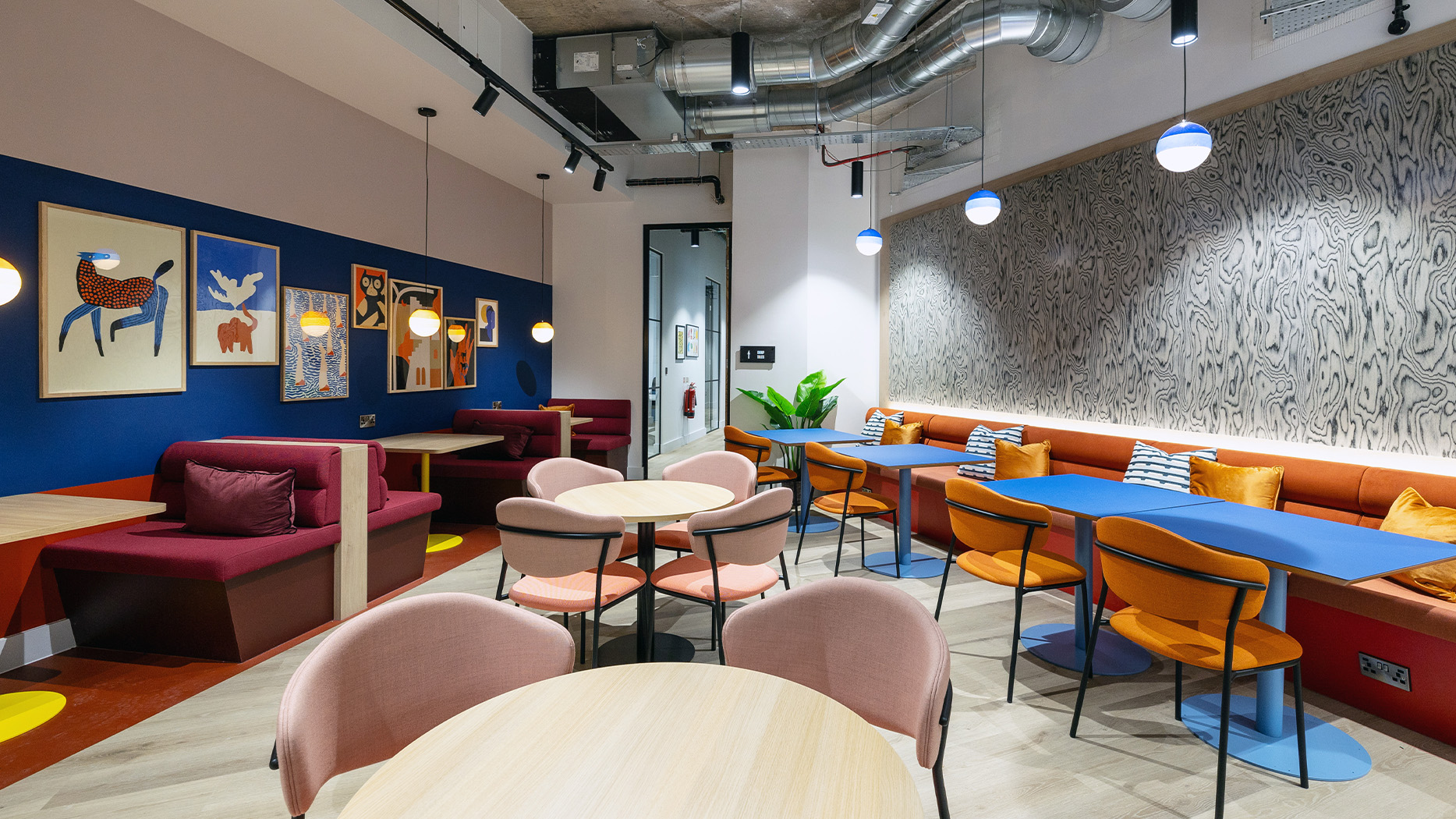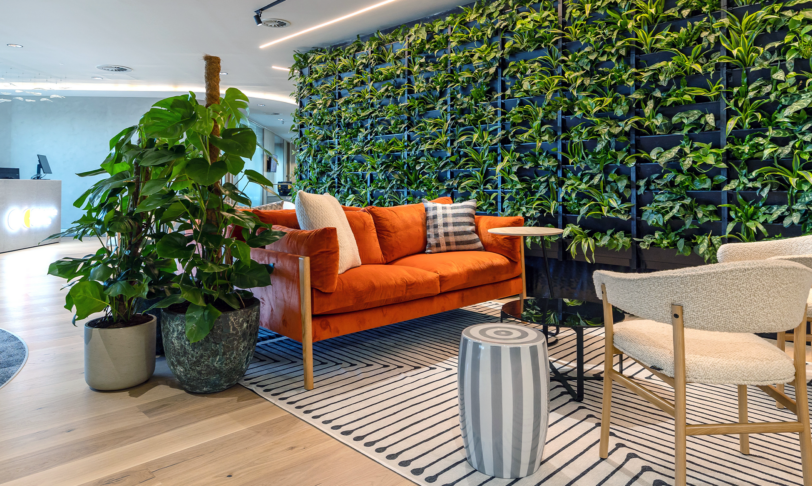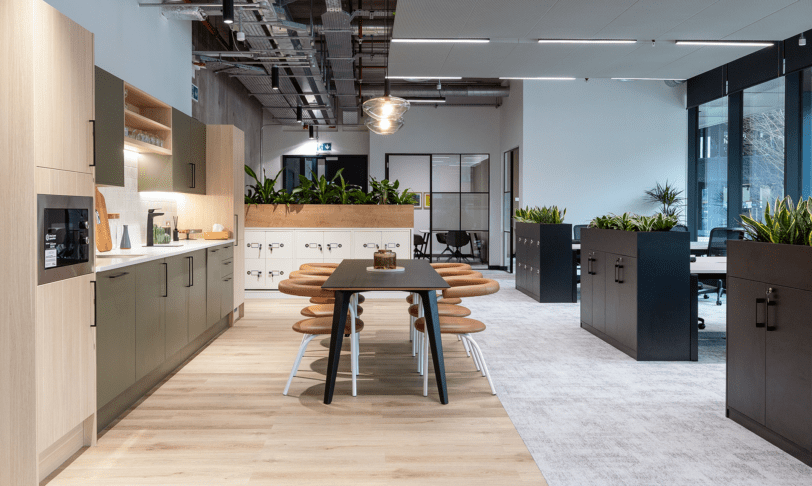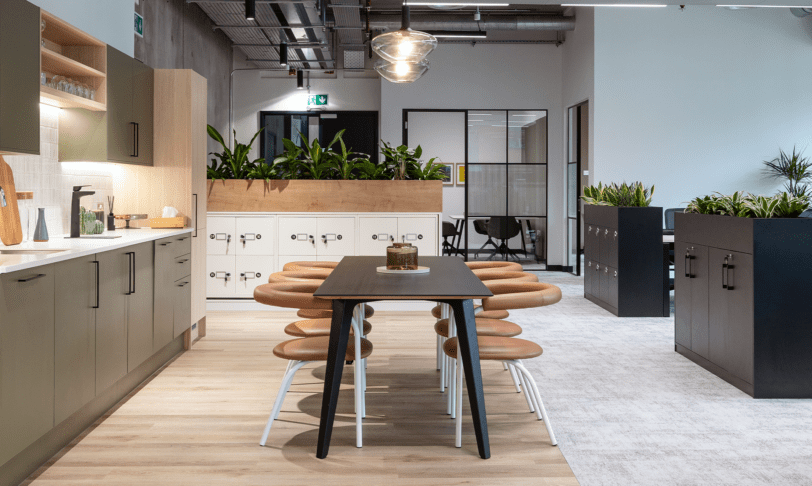Flexing models – what asset managers can learn from coworking operators
As coworking space operators enter what Cushman and Wakefield refer to as the “New Era,” now is a perfect time to consider what makes them successful and what other commercial property professionals can take away from their tactics. Coworking space operators, also known as flex operators, have become essential to the modern workplace, riding a wave of popularity brought on by the growth of flexible and hybrid working. They serve enterprises that require operational flexibility, scale-ups, firms unsure about their real estate strategy, and newly hybrid personnel.
In 2023, the UK coworking market was valued at $1.25 billion, and by 2030, it is expected to have grown to $2.02 billion. This growth isn’t driven by circumstance alone. Coworking space operators have well-honed commercial models, an understanding of the value of community, and an emphasis on tenant experience, which have set them up for success. For instance, CBRE recently recognised the potential of coworking spaces and purchased Industrious to handle their excess office space.
Here, we’ll explore how coworking operators create spaces through community-building, dynamic design, and flexible leasing models. You’ll discover how their strategies drive engagement, retention, and long-term asset performance. Whether you’re managing a property or adapting to market shifts, this guide offers insights to enhance tenant experience and maximise value.
Community is the catalyst
For an abstract concept, community is a surprisingly powerful driver of ROI. Curating a community in a space means creating a sense of shared belonging and purpose. Most coworking spaces host regular networking events, including (but not limited to) happy hours, cake tasting and skill sharing. Themed events, whether based around holidays, cultural happenings or simply good coffee create shared experiences, which contribute to member’s sense of identity and belonging. Of course, a focus on building community has a valuable side effect – happier, more engaged tenants, who stay longer, make more referrals, drive higher occupancy rates and better long-term asset performance. Coworking spaces report higher retention rates than traditional offices, something attributed to the communities they engineer. However, flex spaces don’t have a monopoly on building communities – the right mix of strategy, space planning and social amenities can combine to bring traditional tenants together across floors and industry sectors.
A 1-point increase in tenant satisfaction is associated with an 8.6% higher likelihood of lease renewal and a 3% to 5% increase in annual total returns.
How coworking operators curate spaces for success
Coworking space operators put a lot of thought into their ideal deal tenant type – and the way their tenants will interact. Many base their entire brand around attracting certain types of tenants; tech businesses, scale-ups, and sustainability-focused organisations. Alternatively, they may look to attract a diverse mix of business at the same life stage, or with a similar ethos. However they cut it, coworking space operators know that the mix of businesses and people under their roof is the foundation of their model. Encouraging collaboration, cross-pollination of ideas and networking supercharges not only the businesses but also the community.
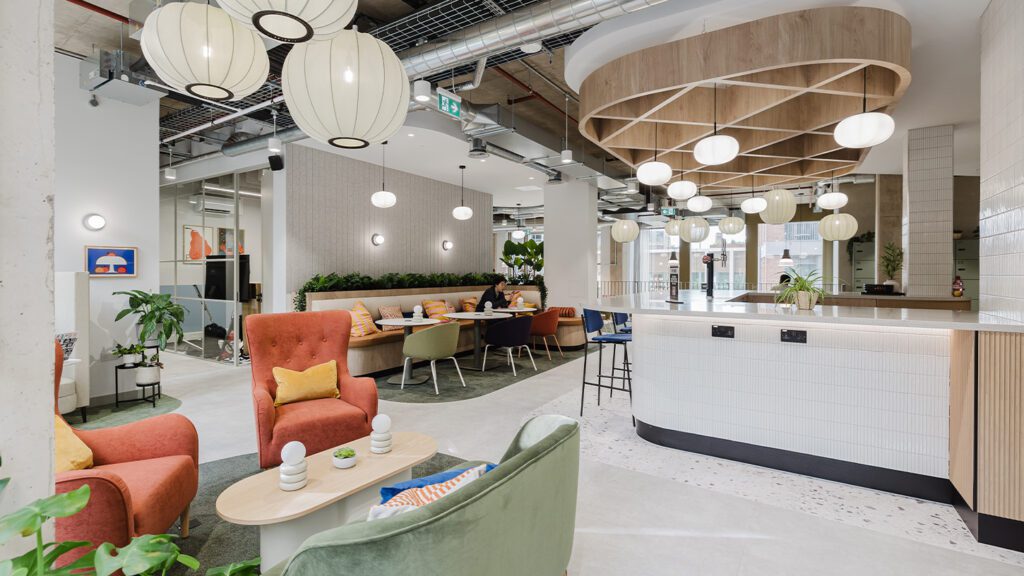
Dynamic design strategies
It’s tempting to see communal areas, kitchens and event spaces as a waste of revenue-generating floorplate. However, it’s these spaces that are key to tenant interaction and engagement – and therefore retention. Flex space operators typically allocate 15-20% of space to these areas, which encourages informal networking and creates a sense of belonging.
Flexible is functional
Not only do flex footprints designs value non-revenue-generating spaces, but they foreground adaptability. It’s vital their layouts, furniture and purpose can be easily changed and reconfigured on the fly. This allows the spaces to align with ever-changing tenant requirements and constantly maximise profitability.
Adapting to uncertainty
It’s not just design that needs to be flexible.
Flex space operators excel in operational agility by offering adaptable lease terms and tenant-focused amenities that respond to shifting demands. For instance, during periods of market uncertainty, many operators introduced short-term leases and pay-as-you-use models, allowing tenants to scale their space up or down as needed. This flexibility has been particularly attractive to startups, freelancers, and larger enterprises testing new locations without committing to long-term contracts. Additionally, flex operators regularly add amenities based on tenant feedback, such as wellness rooms, dedicated quiet zones, or enhanced tech connectivity to support hybrid work models.
Branding brilliance
Along with a clear idea of their ideal tenants, the best coworking businesses have a very clear idea of themselves – their positioning, their branding, their aesthetic and their ethos. This in turn attracts like-minded tenants and filters out less suitable ones. Vibrant and eclectic or serious and business-like – each operator knows its market and caters distinctly to it. When it comes to your assets, positioning a property as, say, a tech hub with smart amenities can increase its appeal to fast-growing scale-ups, reducing marketing costs and vacancy periods. Understanding the wider market and curating the brand of your asset to complement it is key.
Sustainable design as a strategy
Sustainable design is often perceived as a “nice-to-have” feature, but it is rapidly becoming a design essential with tangible benefits for tenants and asset managers alike. Biophilic design, for example, doesn’t just improve aesthetics – it has been proven to make occupants feel healthier, more relaxed, and more engaged. Studies have shown that green office spaces can command rental premiums, of 7% – 10%, indicating that tenants value sustainability and are willing to pay more for environmentally friendly buildings.
Beyond the financial benefits, these designs contribute to employee well-being, creating spaces that foster interaction and collaboration while enhancing an asset’s ESG credentials.
Incorporating circular economy design strategies can take sustainability further, by focusing on resource efficiency, waste reduction, and long-term resilience. This approach encourages the use of recycled and renewable materials, modular designs for easy reconfiguration, and systems that minimise resource consumption. Flex space operators are increasingly adopting such principles, integrating materials that can be reused or recycled at the end of their lifecycle and reducing reliance on non-renewable resources. For example, furniture made from reclaimed wood or modular flooring systems designed for disassembly aligns with circular economy goals while maintaining modern aesthetics.
Certification programs such as SKA, WELL, Fitwel, or BREEAM further validate these sustainability efforts, signalling to tenants and investors that a property meets high environmental and wellness standards. These certifications not only enhance asset value but also attract premium tenants, particularly those with their own ESG targets to meet. Sustainable office spaces designed to promote collaboration and comfort contribute to tenant retention rates, which can be boosted by up to 20% in ESG-certified properties. By adopting these principles, asset managers can future-proof their portfolios, align with market demands, and achieve superior financial performance while making a meaningful environmental impact.
Designing for diversity
Coworking spaces have to cater for every type of work – and every type of person.
Quiet booths, large collaboration areas, solo work pods, social zones – nobody should struggle for a space to do a specific type of work. Similarly, designs that work well for people all across the neurodiverse spectrum are vital, meaning good acoustics, low-stimulation zones, clearly marked pathways and spaces to recharge all feature heavily.
Cutting-edge tech
Bespoke apps, meeting room booking systems, biometric scanners and intelligent heating and lighting – working in a flex space should be friction-free for tenants. However, there’s a double bonus to being a tech-enabled space; cost savings on building management, utilities and manpower. Flex operators often deploy IoT systems to monitor and optimise energy usage, reducing operational costs and environmental impact. Key components of IoT-driven smart facility management include:
- IoT Integration: Networks of connected devices, such as sensors and smart systems, monitor and control building operations in real-time, enabling dynamic responses to changing conditions.
- Data analytics: Analysing data from IoT devices uncovers patterns and trends, providing actionable insights for resource allocation and improving building performance.
- Automation and control: Automated systems adjust lighting, temperature, and security settings based on real-time data, reducing manual intervention and ensuring optimal operational efficiency.
- Predictive maintenance: IoT data enables the prediction of maintenance needs, allowing for timely interventions that prevent equipment failures and minimise downtime.
Actionable insights for asset managers from coworking operators
- Invest in experience: Small, strategic investments in shared spaces or tenant programming can yield significant returns.
- Audit spaces: Identify underutilised areas that can be transformed into communal spaces to foster tenant interaction.
- Start small: Initiate cross-floor tenant programs such as networking events or shared amenities to build a sense of community.
- Measure success: Lean into the flex model of delighting your tenants – monitor metrics like retention and NPS scores to assess the impact of community-building initiatives.
- Partner strategically: Collaborate with experienced operators or consultants to implement effective community-focused strategies.
- Embrace ESG: Incorporate sustainable and socially responsible practices to meet ESG criteria and attract conscientious tenants.
- Become tech-enabled: Asset managers can adopt tech tools to enhance their properties:
• Smart building systems: Deploy IoT devices for energy management, predictive maintenance, and space monitoring. These systems not only reduce energy bills but also provide data to improve space allocation and usage.
• Tenant engagement platforms: Introduce apps that offer functionalities such as booking shared spaces, requesting services, or connecting with other tenants. These tools improve tenant satisfaction and make property management more efficient.
• Data-driven decisions: Leverage analytics from smart technologies to identify underused spaces and reconfigure them for higher demand, such as converting unused conference rooms into coworking areas. - Focus on flexibility:
• Short-term leases: Introducing three- or six-month leases to appeal to tenants unsure of their long-term space needs.
• Customisable spaces: Allow tenants to reconfigure spaces easily, such as transforming meeting rooms into private offices or collaboration hubs.
• Feedback-driven Enhancements: Implement regular tenant surveys to identify desired amenities and tailor services accordingly, such as creating wellness areas or upgrading building technology.
Why Interaction?
Interaction specialises in creating tenant-centric spaces that foster community and align with ESG goals. Our expertise in sustainable design and commitment to delivering high-quality, flexible work environments makes us a powerful partner for asset managers seeking to unlock the benefits of flex models.
If you’re looking to expand your tenant-centric workplace with flexible and sustainable design, speak to one of our experts today.
